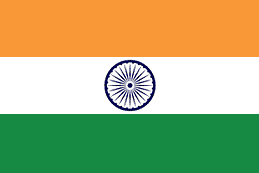Particulars of its Organisation, functions and duties
Last updated on 20-01-2015, 16:39 HRS
Constitution of the Board
The Board consists of 32 Members who include:
- Chairman
- a) Secretary
- b) Three members of Parliament of whom two shall be elected by the House of the People and one by the Council of States
- c) Three members to represent the Ministries of the Central Government dealing with: -
- i) Commerce;
- ii) Agriculture; and
- iii) Finance;
- d) Six members to represent the growers of spices;
- e) Ten members to represent the exporters of spices;
- f) Three members to represent major spice producing States
- g) Four members one each to represent:-
- i) The Planning Commission;
- ii) The Indian Institute of Packaging, Bombay;
- iii) The Central Food Technological Research Institute, Mysore;
- iv) Indian Institute of Spices Research, Calicut;
- h) One member to represent spices labour interests.
The Board has three statutory committees as under:
- Executive Committee
- Research & Development Committee for Cardamom
- Market Development Committee for Spices
Functions of the Board
The Spices Board Act, 1986, has assigned the following functions to the Spices Board:
The Board may-
- Develop, promote and regulate export of spices;
- Grant certificate for export of spices;
- Undertake programmes and projects for promotion of export of spices;
- Assist and encourage studies and research, for improvement of processing, quality techniques of grading and packaging of spices;
- Strive towards stabilization of prices of spices for export;
- Evolve suitable quality standards and introduce certification of quality through “Quality Marking” of spices for export;
- Control quality of spices for export;
- Give licenses, subject to such terms and conditions as may be prescribed, to the manufacturers of spices for export;
- Market any spice, if it considers necessary in the interest of promotion of export;
- Provide warehousing facilities abroad for spices;
- Collect statistics with regard to spices for compilation and publication;
- Import with prior approval of the Central Government any spice for sale; and
- Advice the Central Government on matters relating to import and export of spices.
The Board may also-
- Promote co-operative effort among growers of cardamom;
- Ensure remunerative returns to growers of cardamom;
- Provide financial or other assistance for improved methods of cultivation and processing of cardamom, for replanting cardamom and for extension of cardamom growing areas;
- Regulate the sale of cardamom and stabilization of the prices of cardamom;
- Provide training in cardamom testing and fixing grade standards of cardamom;
- Increase the consumption of cardamom and carry on propaganda for that purpose;
- Register and license brokers (including auctioneers) of cardamom and persons engaged in the business of cardamom;
- Improve the marketing of cardamom;
- Collect statistics from growers, dealers and such other persons as may be prescribed on any matter relating to the cardamom industry, publish statistics so collected or portions thereof extracts there from;
- Secure better working conditions and the provision and improvement of amenities and incentives for workers; and
- Undertake, assist or encourage scientific, technological and economic research.
| The following 52 spices are listed in the schedule of the Spices Board Act: | |||
|
*Major items having substantial exports are indicated with asterisks.







